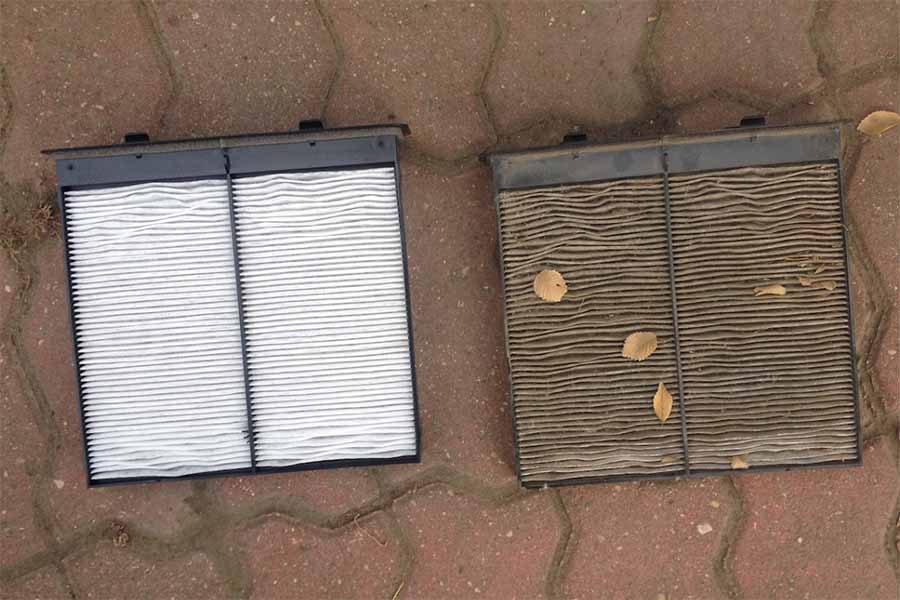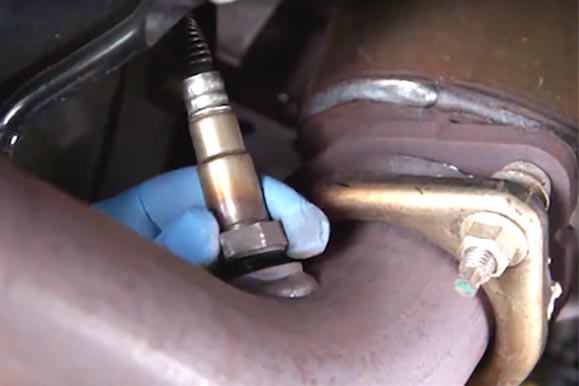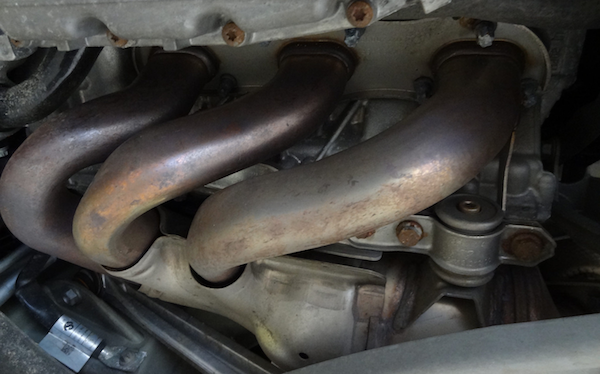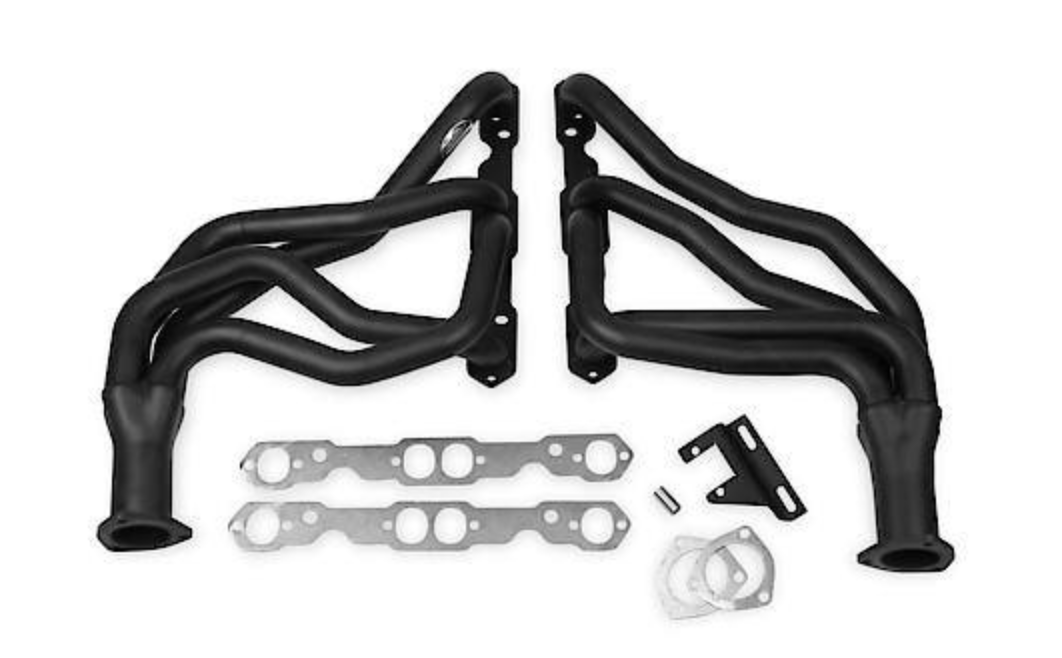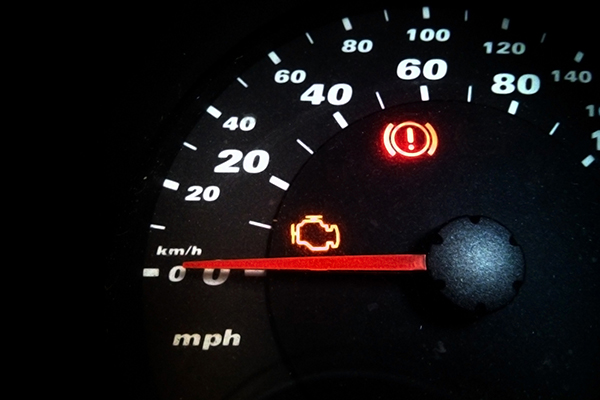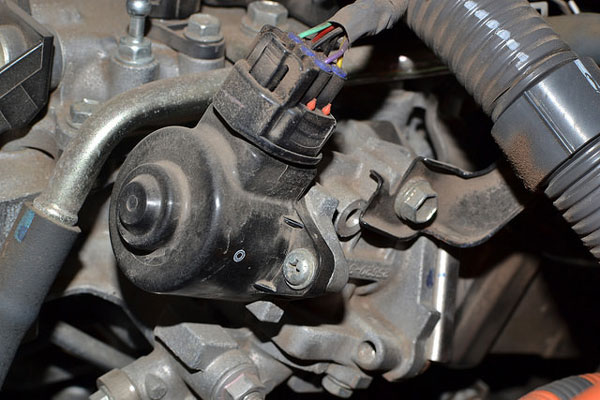Whether you have a '55 Chevy Bel Air or a 2016 Ford F-150, your vehicle has and needs a properly functioning muffler for two main reasons: reducing the noise your engine makes during combustion and maintaining what is known as back pressure at the proper level. Back pressure is the resistance to the flow of exhaust gasses imparted by the exhaust system itself. A failed or failing muffler will fail in one or both of these areas.

Source | Mike Aguilar
This is a project that needs some know-how
- Your engine size
- Whether you have single or dual exhaust
- The full dimensions of your muffler length, width, height and shape (square, round, oval, etc.)
- The inner and outer diameter of the muffler's inlet and outlet
- The inner and outer diameter of any pipes that need to be replaced
-
Raise and support the vehicle high enough to work safely and comfortably under it. You may only need to raise and support one side.
-
Place stands or blocks under the exhaust pipes and muffler to support them during the next step.
-
Remove the exhaust clamps or cut off the muffler and pipe(s) being replaced. If you're only replacing the muffler and the exhaust clamps aren't rusted too badly, you can remove them with a wrench or socket. The nuts on these clamps are usually either 1/2- or 9/16-inch standard, or 14 mm metric.
If you're replacing the exhaust pipe that attaches to a catalytic converter or exhaust collector flange, spray those bolts copiously with penetrating oil before removing them with a wrench or socket and ratchet. For extreme cases, PB Blaster is a penetrating oil that's more effective than WD-40. Use a hammer and cold steel chisel between the pipes to slice through the outer pipe if they are rusted together.
In cases of pipes that have fused together after years of heat, you may need to separate them with a torch.
-
Release/remove the hangers. There are several types of hangers. Some are bolted, some attach to the clamps and some are rubber and slide on and off barbed posts on the frame and exhaust system. Penetrating oil or lubricant will make removing these easier.
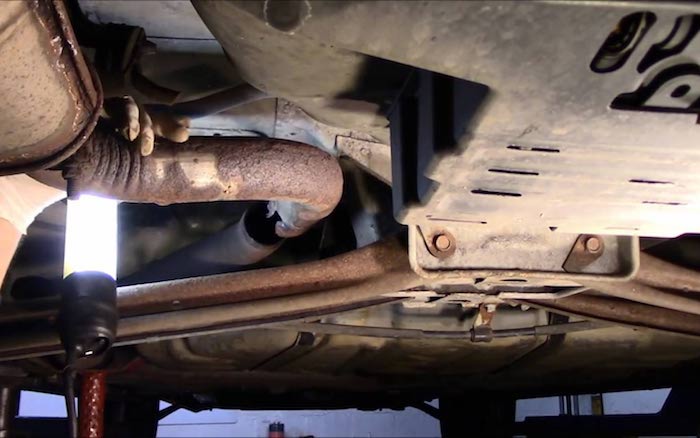
Source | Mike Aguilar
-
Remove the old muffler from the car.
-
Compare the old muffler to the new muffler to ensure proper fitment.
-
Reassemble the exhaust system starting with any pipe(s) attaching to bolted flanges up front. Don't forget the flange gasket or donut, if applicable. Leave the attachment loose enough that it can be manipulated if necessary. Attach the hangers as you go.

Source | Mike Aguilar
-
Start adding the rest of the pipes and the muffler. Keep everything loose for now.
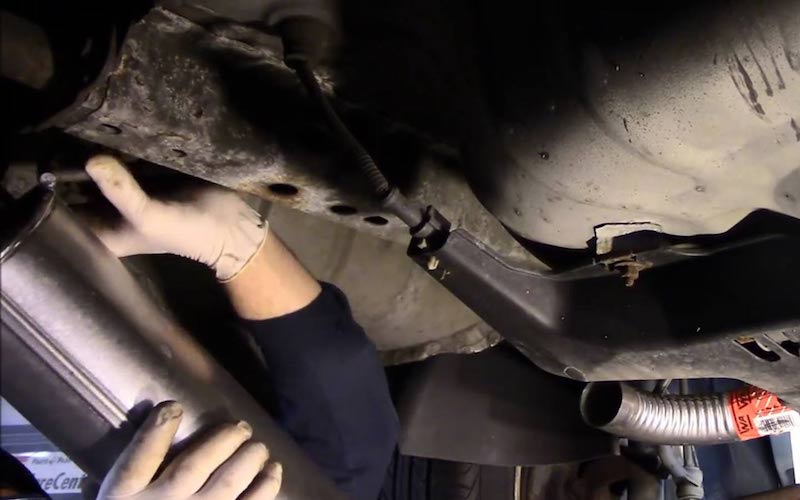
Source | Mike Aguilar
-
Tighten the flanges and clamps from the front to the rear, making sure the muffler and tailpipe stay in the proper position. Lower the car, and you're done.
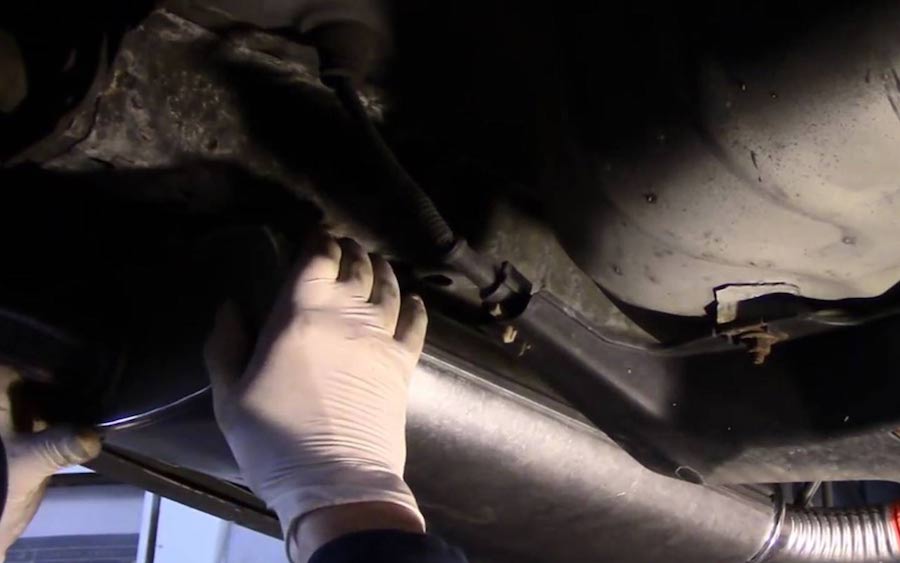
Source | Mike Aguilar
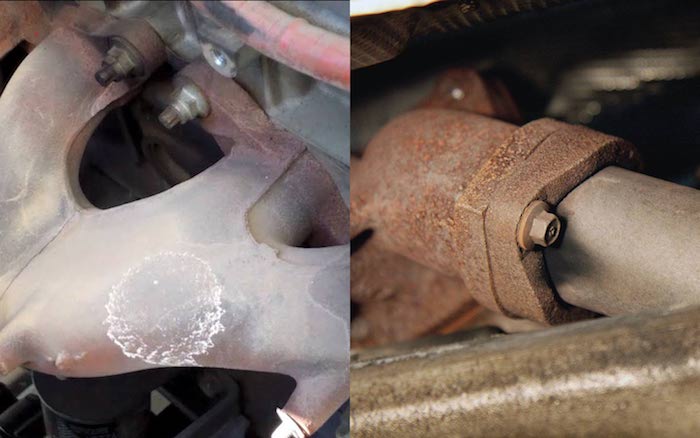
Source | Mike Aguilar
An increase in exhaust noise isn't always caused by a muffler that needs replacement — the manifold or flange gasket may be leaking. There could also be a hole in one of the exhaust pipes. Leaking exhaust gaskets will have black soot at the point of the leak. The image above shows two leaking exhaust gaskets. On the left is an exhaust manifold, and on the right is a flange.
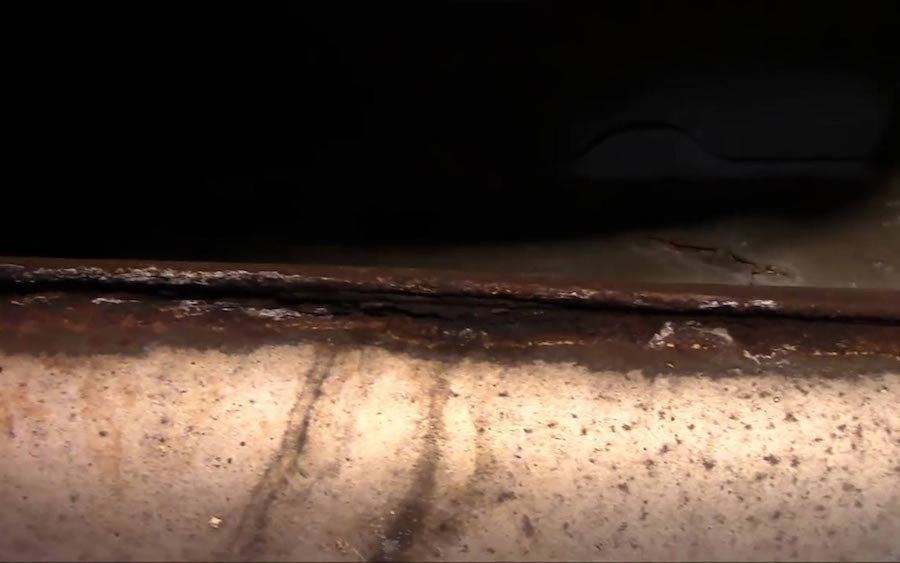
Source | Mike Aguilar
If one of the gaskets is leaking, you'll hear a ticking that's in time with the engine if you listen carefully. A compromised muffler won't have that ticking; it will usually be more of a rumble. There will also be black soot on the manifold or flange if the gasket is leaking. A failed muffler may be covered in rust that's eaten holes in it, the seams may be splitting (like in the image above) or the muffler might rattle when you shake it, indicating the tack welds on the baffles have broken.
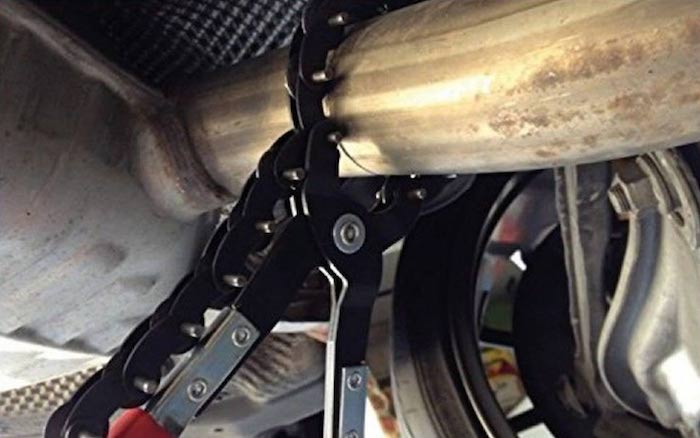
Source | Mike Aguilar
Good welding equipment isn't cheap and doesn't really make sense for someone who might use it once or twice a year. Most of us are going to use hand or air tools to cut the bad parts out and install the new stuff. I use a reciprocating saw or a hack saw to cut the pipes and a chisel to cut clamps. Advance Auto Parts's loaner tool program includes an exhaust repair kit that has a chain-type pipe cutter that you can use if you don't have a saw or torch to cut the pipes with.
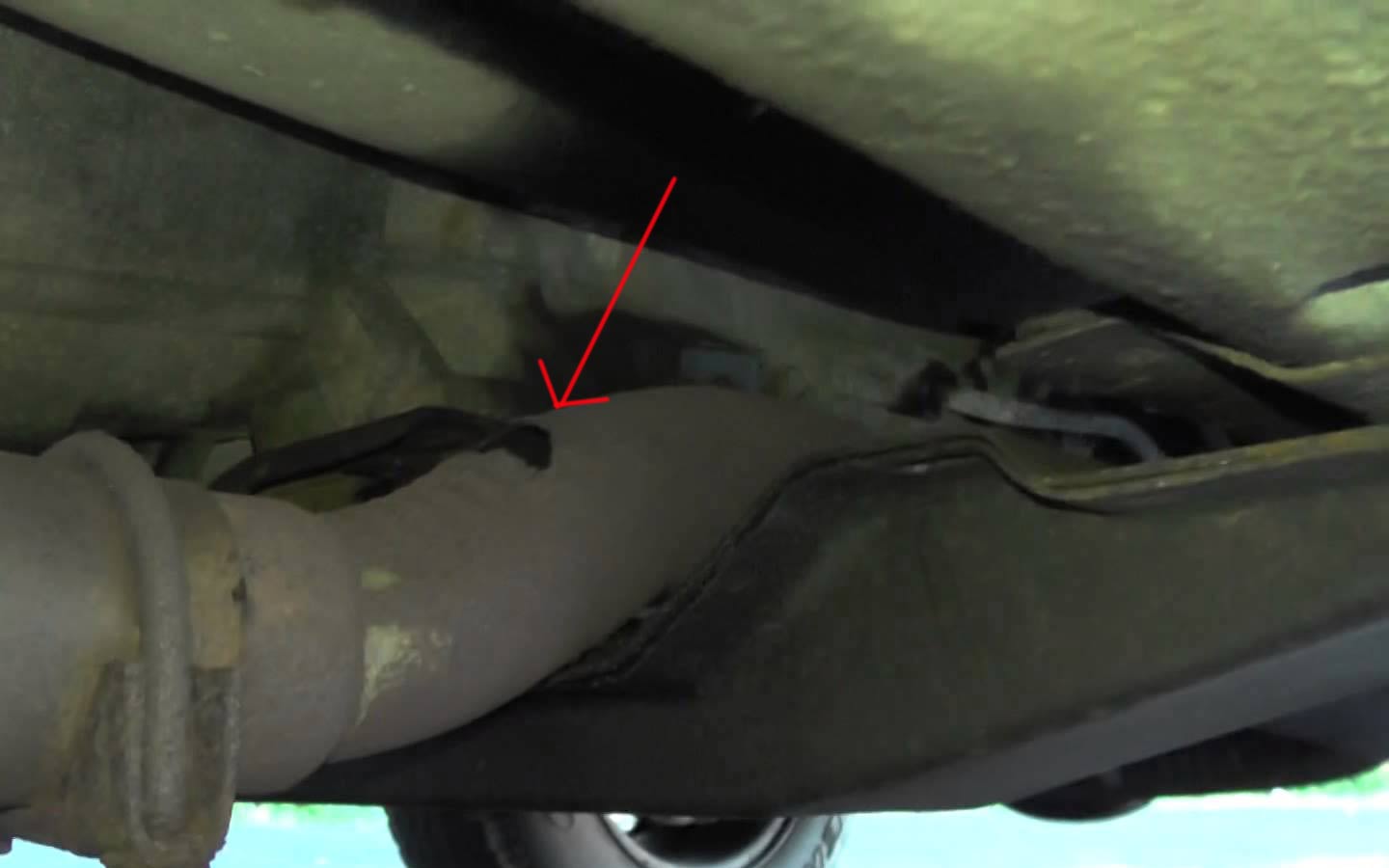
Source | Mike Aguilar
Nothing's worse than fixing something and then having to go right back to the same place and fix something you should have done the first time. If your muffler has failed, it's a good bet that the pipes are ready to be replaced as well. Squeeze the pipes with a pair of slip jaw pliers (also known by its brand name of Channellock) with moderate force. If the jaws of the pliers break through the metal or if you can squeeze them more than a quarter-inch, the pipe should also be replaced. This degree of rust is a much more commonplace problem in areas that have harsh winters with lots of snow and slush (and road chemicals).
There are several pieces of information beyond year, make and model of your vehicle the Advance Auto Parts counterperson is going to need to know in order to get you the parts that will fit your vehicle. These are:

Flowmaster Inc. Super 44 Muffler | Advance Auto Parts
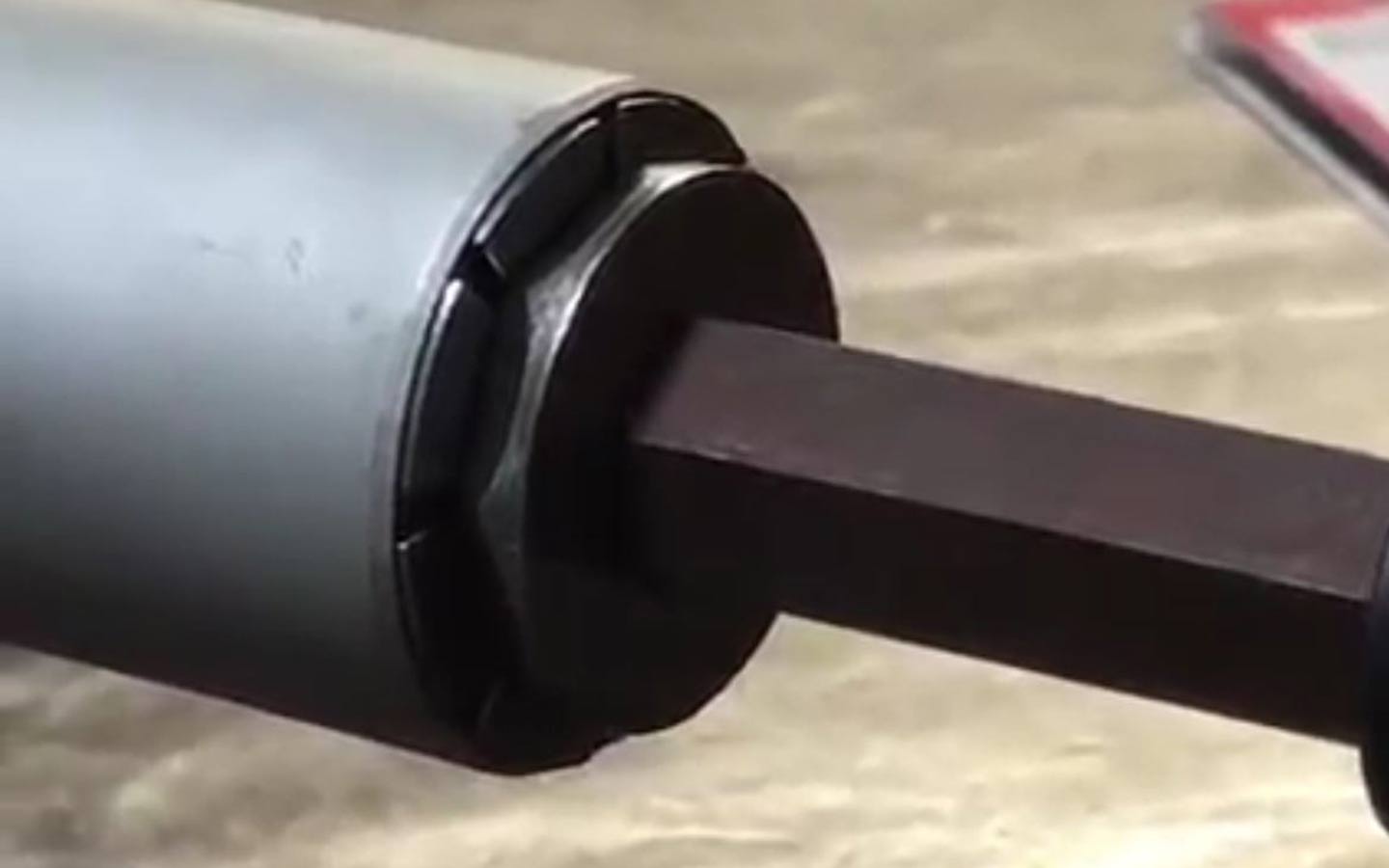
The four-piece exhaust service kit from the Advance Auto Parts loaner tool program has the specialized exhaust tools that you'll need to make quick work of this project. Two of these are called swedges, and they'll allow you to flare and expand pipes that don't quite slide over one another. Insert the tool into the pipe and tighten the bolt on the end to do this.
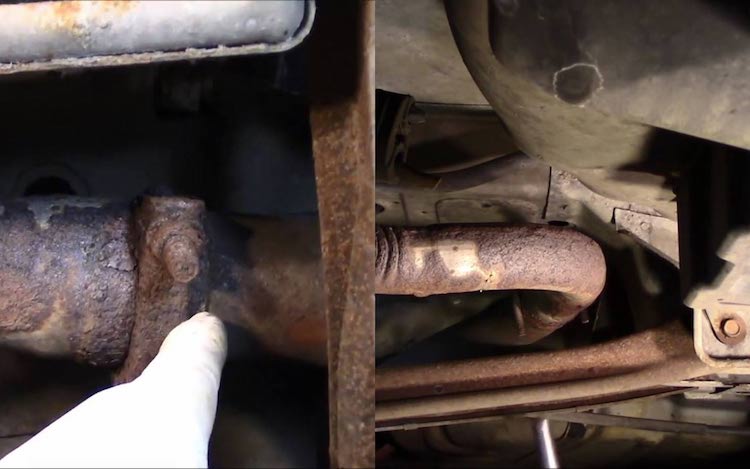
Exhaust clamps that are badly rusted like these will most likely break when you try to remove them with a wrench or ratchet. This rusted pipe was weakened to the point that we replaced it with the muffler. Source | Mike Aguilar

